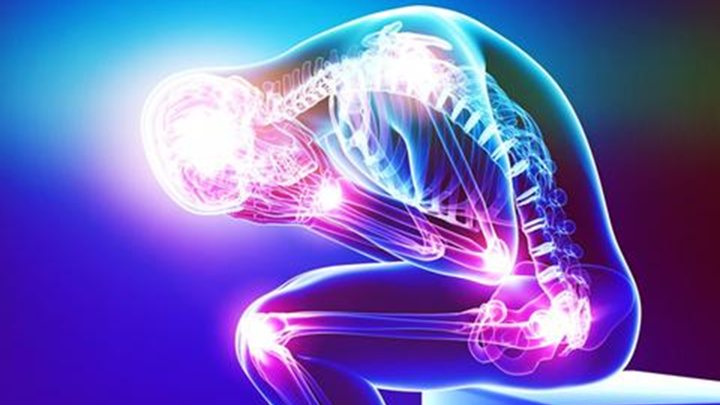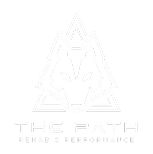Why am I still in pain?

We’ve all been injured in some way, shape, or form. Whether that be a traumatic sports-related incident such as a broken bone or ankle sprain; a bruise, laceration, burn, or abrasion; or even a stubbed toe; the word “injury” brings to mind a very clear image or memory from some point in our past that we would prefer not to repeat. In these instances, there is usually a clear, definable sequence of bodily trauma, leading to some sort of tissue damage, ultimately leading to pain, which in theory lasts about as long as the tissues take to heal.
This is where things get a bit stickier, as I’m sure most of you know it’s not that simple or else you wouldn’t be reading this blog. Pain, in its most deconstructed form, is an electrical signal or “message” communicated from the initial trauma site to the brain, detected via sensory receptors at the tissue site and transmitted to the brain to be interpreted and “computed.” If this signal exceeds a certain intensity threshold, this is when we become conscious of the distressing pain experience and are able to act accordingly in order to mitigate any bodily dangers that may be present. Think of a home security alarm; if an invader breaks down a door or window, the alarm goes off to alert the homeowner that a threat is present.
The problem is, our nervous system is not a simple alarm system that works the same way each time. Our nervous system, made up of our brain, spinal cord, and all of the nerves in the body, is capable of something called neuroplasticity, in which the neurons in the brain and body can re-wire and re-structure based on experienced repetition to become more efficient at sending specific signals. This is how humans can learn complicated tasks such as learning a new language, mastering an instrument, perfecting an athletic task so that it becomes second nature… the list goes on infinitely. While in many cases this is a beneficial phenomenon, in the case of pain it can be the exact opposite. In situations where a similar body part has been injured multiple times or has experienced such a severe injury where the pain signal is strong enough, the nervous system can adapt via neuroplasticity to become better at sending pain signals. In essence, the body learns to be in pain. It is an adaptive mechanism that our bodies use. The logic is: “well, I DEFINITELY didn’t like that, let’s never do that again.” So it produces pain as a protective alarm to prevent further harm, and we find ourselves with a painful injury that we can’t seem to overcome.
Furthermore, this same pain alarm “learning” can occur specifically in the context of certain movements or tasks. If bending and lifting, for example, has hurt in the past, the nervous system can associate that specific motor pattern with the neurologic pain response. This is why we often see lifters with specific SI joint pain with the lockout of the deadlift, for example, or shoulder pain with overhead movements, or even knee pain in the hole of the squat. While there may have been some tissue-specific driver at some point in the past, if the pain has become a long-term issue, it is likely that the nervous system has adapted to associate those specific tasks with something that is “dangerous.” It therefore couples those tasks with a painful response because it has learned, via experience and neuroplasticity, that that task or movement has led to injury in the past and it doesn’t want that to happen again. While our nervous system is just trying to look out for us to protect us from harm, it can be very difficult to overcome what is now a “chronic pain” situation with specific movements and situations.
Another important driver in our bodies’ susceptibility to these painful adaptations is our mental state; specifically our level of stress and beliefs about why we are in pain. If we are in a state of chronic stress or become particularly fearful of a certain movement due to a past or recurrent injury, our nervous system will detect that stress and interpret that there is a legitimate danger present, even if the pain or initial injury is something relatively innocuous that will heal or has healed with time. In the presence of stress and fear, especially when it is specific to the activity in which the individual was injured originally, our nervous systems can become hypervigilant and produce a chronic pain response in an attempt to prevent further harm. It’s like a house alarm that has experienced a traumatic break-in or multiple break-ins in the past, becomes understandably paranoid, and then begins to set off the alarm at the drop of a dime because it is scared that every small perturbation is another break-in. For those of us that are laid back and generally nonchalant after an injury, expecting a smooth recovery, then the recovery will likely be non-complicated. But for those of us who are more high-strung, fearful that an injury will never get better, nervous about getting re-injured, and are convinced that something severe and irreversible must be going on anatomically, the pain response is much more likely to become complicated and chronic. It’s like a self-fulfilling prophecy.
So what can be done to mitigate this learned pain response and return to our prior activities without pain? The first and most important step is to stay calm and trust in the resilience of our own biology in its ability to heal. Our bodies have amazing healing capabilities. Even in situations where our tissues don’t heal perfectly, our bodies can find a way around it and press on. There is an enormous amount of MRI research coming out showing that a vast majority of the PAIN-FREE population is actually walking around with latent meniscal tears, rotator cuff tears, torn labrums, and “bone-on-bone” arthritis, among many other diagnoses that were once thought to be a sure-fire ticket to the surgical table. Just because something looks ugly on an image doesn’t mean that it will lead to pain, decreased function, or disability in the future. The people who are the most nonchalant and resilient with their injuries are typically the ones who brush them off the fastest and experience the least amount of pain, despite a seemingly severe injury on an image. On the other hand, it is those of us who view our bodies as a “broken car beyond repair” that have the biggest trouble with recovery.
“So, are you saying that because I have chronic pain, then I’m not resilient?” Absolutely not. In fact, oftentimes it is the most resilient and stubborn among us that have the most persistent pain. I’m sure many of you have had a bad injury or series of injuries to the same body part in the past and then tried to shrug it off, do a little self-rehab, and then proceed as normally as possible. While this is not always a bad route to take, sometimes what can happen is that when people return to their prior sports and training, they subconsciously modify their technique to “spare” the injured site to avoid reproduction of pain. Think of somebody lifting with a more vertical spine after a back injury, or lifting with a neutral wrist after a bad break in order to avoid the painful ranges of motion when loaded. By not exposing these body segments to these painful ranges, we are telling our nervous system that the pain response is valid; that these movements and positions are indeed dangerous; and the pain persists for prolonged periods.
“So besides having a good attitude, what can I do?” Here comes the shameless PT plug, but with a caveat. While I am a big advocate for Physical Therapy, a huge problem with the profession is that many PT’s will PERPETUATE THE ISSUE BY FEAR MONGERING. If you can tell by the all-caps, this is something that gets me heated. Too often I have heard well-meaning physical therapists, chiropractors, physicians/surgeons, coaches, etc spout unsubstantiated claims as to why pain is persisting, such as: “your SI joint is out of place,” “your hips are rotated,” “your spine is misaligned,” “you have bone-on-bone arthritis,” “it’s because you have bad posture,” “you have a muscle imbalance,” “your joint is stuck,”.... The list goes on and on. While it is easy to fall into the trap of trying to provide a clear cut answer to why someone is in pain, what these professions often end up doing is providing a narrative (the vast majority of which are unsubstantiated by the research) that leads to an increase in fear, dependency, anatomically reductionist thinking, and the mindset of “I am broken and I need YOU to fix me.” Although these professions, PT included, have the best intentions, sometimes their words cause more harm than good.
What I would recommend is finding a PT that you trust; one who understands the nuances of the sport that you are trying to return to; who listens to your concerns compassionately; who, rather than increasing fear and breeding dependency by throwing out unsubstantiated diagnoses, encourages graded exposure to our painful tasks in order to facilitate tissue and nervous system resilience to ultimately reduce fear and improve meaningful function. Through graded exposure, we can dissociate the alarm-system pain response with the previously-painful task by reintroducing it in a controlled fashion while also building the strength of the related tissues. In essence, through this approach we attack whatever the bottleneck is to recovery, whether that be fear of movement, lack of confidence, nervous system re-wiring, physical incapacity, or all of the above.
While graded exposure is not a one-size-fits-all approach, seeking a Physical Therapist who trends in this direction will provide you with the most surefire solution to overcoming your longstanding pain and returning to the activities that you love.
References:
- Louw A, Zimney K, O'Hotto C, Hilton S. The clinical application of teaching people about pain. Physiother Theory Pract. 2016 Jul;32(5):385-95. doi: 10.1080/09593985.2016.1194652. Epub 2016 Jun 28. PMID: 27351903.
- Testa M, Rossettini G. Enhance placebo, avoid nocebo: How contextual factors affect physiotherapy outcomes. Man Ther. 2016 Aug;24:65-74. doi: 10.1016/j.math.2016.04.006. Epub 2016 Apr 20. PMID: 27133031.
- Flanigan DC, Everhart JS, Glassman AH. Psychological Factors Affecting Rehabilitation and Outcomes Following Elective Orthopaedic Surgery. J Am Acad Orthop Surg. 2015 Sep;23(9):563-70. doi: 10.5435/JAAOS-D-14-00225. Epub 2015 Jul 20. PMID: 26195567.
- Tabor A, Thacker MA, Moseley GL, Körding KP (2017) Pain: A Statistical Account. PLOS Computational Biology 13(1): e1005142. https://doi.org/10.1371/journal.pcbi.1005142
- Nijs J, Paul van Wilgen C, Van Oosterwijck J, van Ittersum M, Meeus M. How to explain central sensitization to patients with 'unexplained' chronic musculoskeletal pain: practice guidelines. Man Ther. 2011 Oct;16(5):413-8. doi: 10.1016/j.math.2011.04.005. Epub 2011 May 31. PMID: 21632273.
- Nicholas MK, George SZ. Psychologically informed interventions for low back pain: an update for physical therapists. Phys Ther. 2011 May;91(5):765-76. doi: 10.2522/ptj.20100278. Epub 2011 Mar 30. PMID: 21451090.
- https://thelogicofrehab.com/2017/09/11/pain-science-guiding-the-path/
Dr. Brooks Kenderdine
Co-owner
PT, DPT, CSCS, USAW-1
Sign up for our newsletter
Join our community and receive exclusive physical therapy insights, training strategies, and recovery techniques tailored for active people.
